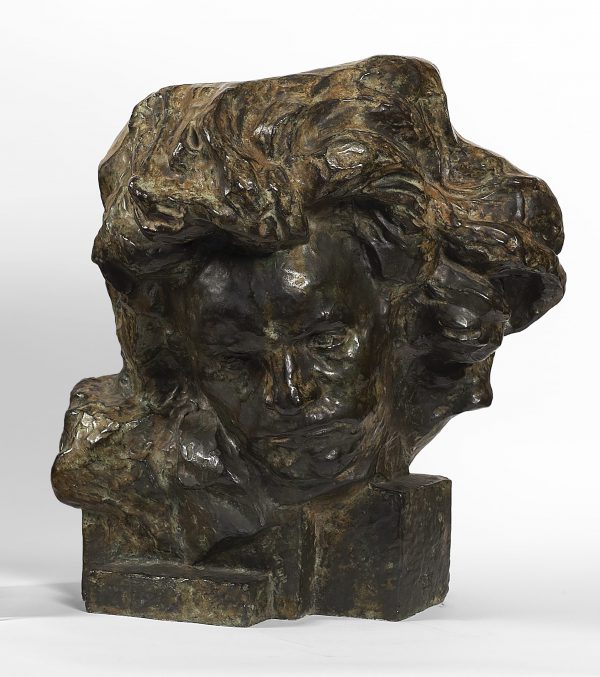Beethoven aux grands cheveux called “au foulard”, 1960
Bronze sculpture, H. 0.48 m; W. 0.45 m
Profondeur : 0,37 m.
Monogramm: AB.
Inscription: © by Bourdelle.
Numbered IV, casting Valsuani.
Certified by Mrs. Rhodia Dufet-Bourdelle.
Provenance: Private collection, Germany.
Michel Dufet, Le drame de Beethoven vécu par Bourdelle , Paris, 1970, p. 14.
Ionel Jianou, Michel Dufet, Bourdelle, second edition with a completed catalogue, Paris, 1975, p. 71-72, no. 72.
An incarnation of Romantic genius, Beethoven inspired countless artists. It is said that the young Bourdelle, while flipping through one of Beethoven’s pieces, was stunned by his own physical resemblance to the composer. He began listening to his music and recounts: “…each cry by this deaf man who heard God directly hit my soul. Beethoven’s forehead sweated on my own crushed heart.”
Bourdelle created multiple works using Beethoven as his model, much like a musician doing variations on a theme. His body of work includes a total of 80 sculptures of the composer, not counting drawings and pastels. In 1929, not long before his death, the sculptor made his final Beethoven, entitled La Pathétique. “We are two fighters who have never been separated,” he declared. “We could shake hands.”
This tormented bust, in which the genius is concentrated in the forehead and the hair, holds traces of Rodin’s influence, though it also bares a simplicity that testifies to the new orientation of the artist.
All the casting of this work have been done after Bourdelle’s death. Like most posthumous castings, it has the inscription © by Bourdelle. The horizontal A and B monogram, almost star-shaped, was created in 1919.
We extend our thanks to Mr. Colin Lemoine for his help in writing this note.
